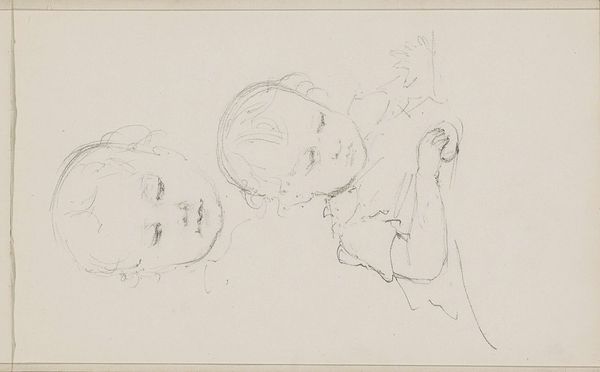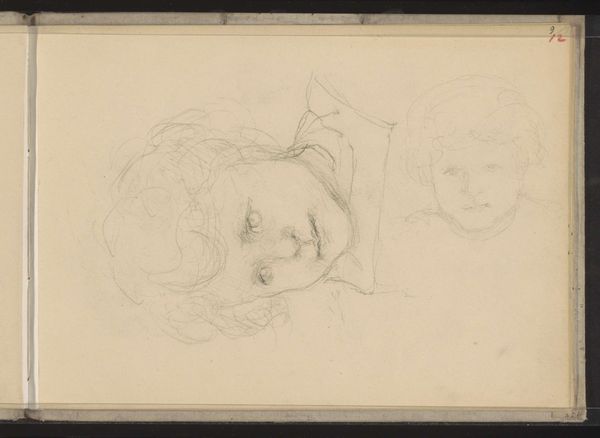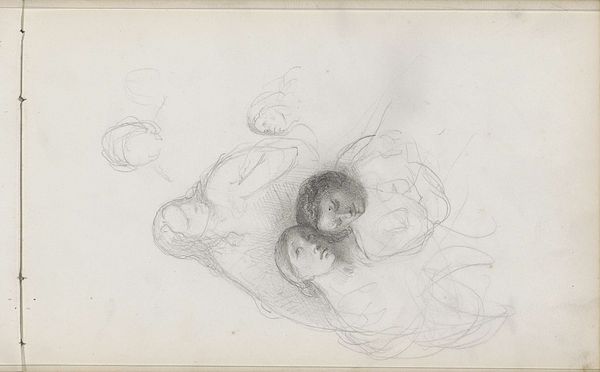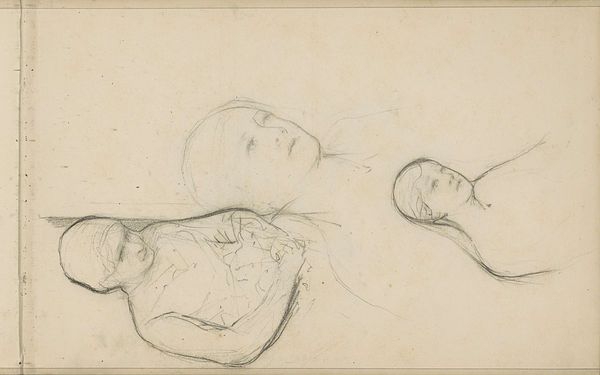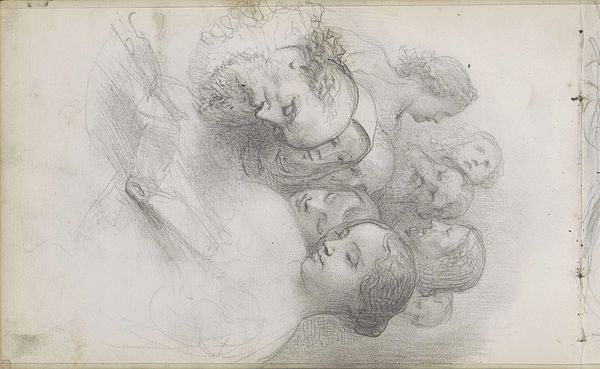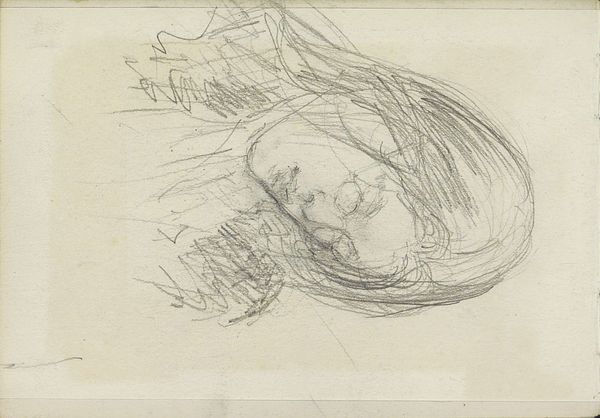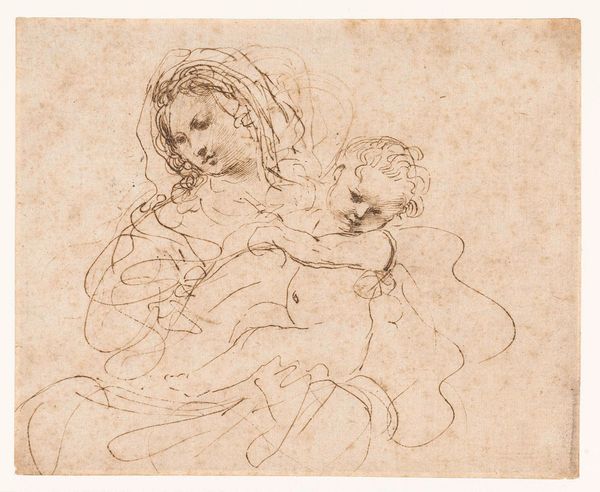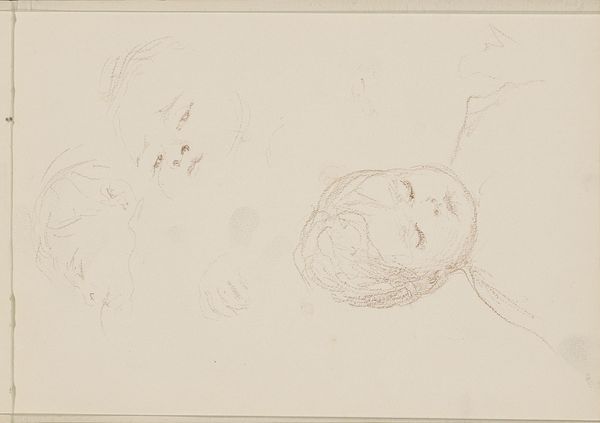
drawing, pencil
#
portrait
#
drawing
#
pencil sketch
#
figuration
#
pencil
#
realism
Copyright: Rijks Museum: Open Domain
Editor: This drawing, “Drie kinderkoppen,” or "Three Children's Heads," by Bramine Hubrecht, dating from 1865 to 1913, features lightly sketched heads using pencil. The fragility of the lines makes me think about fleeting moments of childhood, and memory. What stands out to you when you look at this sketch? Curator: The immediate feeling evoked is indeed ephemeral. These are not fully formed portraits but glimpses, almost dreamlike. Consider the repetition of the "head" motif - three instances, yet each incomplete. This could signify the multifaceted nature of identity even in childhood, or perhaps, the elusive quality of memory itself. Editor: Elusive how so? Curator: Look at how lightly the other two heads are rendered compared to the uppermost one. This central face possesses greater clarity, a certain intensity in the eyes, suggesting a focal point of memory or emotional resonance, with the other two almost fading. There is a hierarchy in representation that underscores the complexities within family dynamics or personal reflection. What emotions do you feel when looking at it? Editor: I feel sadness, like childhood is slipping away. Are there any other readings you find relevant? Curator: Observe the upward gaze of the most prominent head. This directs us to interpret not just individual emotions, but aspirations and perhaps innocence. This placement also prompts questions of what these children are looking up to – literally or figuratively. A drawing like this becomes a rich site for psychological projection. And it has a timeless quality. Editor: That makes sense. I've never considered how a drawing can say so much about how we perceive childhood and memory. Curator: And the continuity of familial experience across time. Seeing really *is* about more than just looking.
Comments
No comments
Be the first to comment and join the conversation on the ultimate creative platform.

